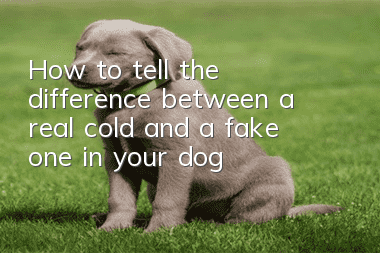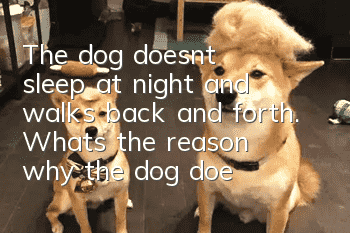How to tell the difference between a real cold and a fake one in your dog?

The early symptoms of many infectious diseases in dogs are very similar to those of a cold. For example, the early symptoms of warm fever in dogs and the early symptoms of parvovirus disease are generally clinically characterized by elevated body temperature, sneezing, blurry eyes, and watery nasal discharge. Due to lack of experience, some owners tend to treat several common serious infectious diseases as colds, thus causing misdiagnosis and wrong treatment measures, leading to serious consequences of the death of their dogs.
The main symptoms of a cold in dogs:
The sick dog is depressed, has loss of appetite or has no appetite, has flushed conjunctiva, and has shy and tearful eyes. There is a cough, pus-like nasal mucus, accelerated breathing, elevated body temperature, chills and trembling. If not treated in time, it may be complicated by other diseases such as tracheitis and bronchitis. There is also influenza, which is caused by a virus and occurs in epidemic form. The main manifestation is high fever. In addition to cold symptoms, it is often accompanied by conjunctivitis and intestinal catarrh.
Real cold in dogs is a systemic symptom mainly characterized by inflammation of the upper respiratory tract mucosa. Colds usually occur in early spring, late autumn and when the climate changes suddenly. Most of the causes are due to sudden cold stimulation, such as being hit by strong winds in winter, sleeping outdoors in cold seasons, being exposed to rain, and not drying the dog's coat in time after bathing.
Fake colds in dogs are generally more common in the early stages of infectious diseases, but in fact there are other special symptoms. When a dog is infected with the canine distemper virus and becomes ill, the body temperature is generally bidirectional, with the body temperature rising and falling. Most sick dogs have symptoms of eye droppings. In the early stage of parvovirus, it is mainly accompanied by major symptoms such as vomiting and diarrhea, and usually vomiting first and then diarrhea. As long as the owner can observe carefully, he can still distinguish and judge.
- What should I do if my dog has no milk? The owner should check quickly and don’t let the puppies starve to death.
- Dog’s anal gland odor, please note that this is a sign of your dog’s health!
- How to make your dog like to eat dog food Four ways to make your dog fall in love with dog food
- Can dogs digest peach pits if they eat them? Can dogs digest peach pits if they accidentally eat them?
- How to protect your dog’s food? Teach you tips on training your dog
- Why do dogs defecate everywhere? How can dogs stop defecating everywhere?
- What should I do if my dog has lupus? Immune system diseases should not be underestimated
- If your dog's hair is cut and the skin is cut, the flesh is exposed. If the dog's hair is accidentally cut and the skin is cut, it must be disinfected immediately.
- Do dogs need deworming in summer? What should you pay attention to when raising dogs in summer?
- What to do if your dog has indigestion? Dog indigestion is no small matter!



